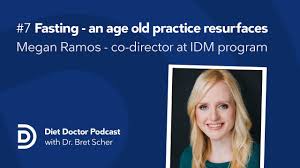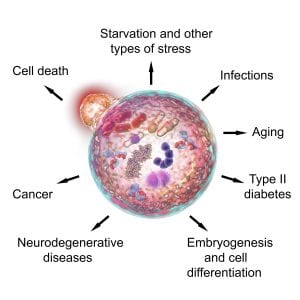I wanted to write this article to address a question I hear often:
Do I need to Fast to Be Healthy?
In short, probably. But what exactly does that mean?
Thanks in large part to Dr. Jason Fung and others, intermittent fasting (IF) has emerged from the shadows of the health movement to now being discussed every day on social media, as if we have been doing it for decades.
And here’s the secret: We actually have been doing it for decades. In reality, it’s more like centuries.
Think of how we evolved. There wasn’t a convenience store, grocery store, restaurant, or fast food joint on every corner. We had to hunt and forage for our food. That took time and was sometimes unsuccessful. The natural result, therefore was periods of eating interspersed with periods of fasting.
Modern society is a far cry from that evolutionary period, as we now have a 24/7 eating cycle with late night taco runs, vending machines and snacks available at a moment’s notice, and misguided advice that we need to eat every two hours to stimulate our metabolism and lose weight (awful advice with no scientific backing, mostly promoted by snack food companies). We have plenty of reason to believe this constant eating cycle has contributed to our current obesity/diabetes/insulin resistance epidemic.
The good news is that we can reverse that trend. We can reverse it by bringing back fasts.
What exactly is fasting?
First we need to define what fasting means, and what time restricted eating means. Time Restricted Eating (TRE), means eating only in a specific time window, and not eating the rest of the day. For instance 18:6 means not eating for 18 hours straight, then eating over a 6-hour period. This can be 12:12, 16:8, 18:6 or even 22:2. They key is that you have an extended period of time each day when you are not consuming calories.
More extensive fasts, 24-72 hours or even longer, are really what we refer to when we say intermittent fasting. For this explanation, I will refer to extended fasts and TRE together as they have similar benefits. I will explore the differences and go into more scientific detail in a future post.
Here are the top 5 reasons we should all fast
1. Fasting is the most efficient way to lose weight.
Forget the fat burning foods, forget the cleanses and detoxes. Not eating is the key to losing weight. But do it intermittently. That’s why it’s called intermittent fasting. Chronic calorie restriction doesn’t work long term since it forces our bodies to reduce our resting metabolic rate (RMR), thus stalling weight loss and increasing frustration. Intermittent calorie restriction, on the other hand, allows for weight loss without changing our RMR, the key to healthy and successful long-term weight loss.
2. IF is a great way to lower insulin.
It just makes sense. If there is no food coming in, there is no need for insulin to rise. Insulin will stay at its low steady basal rate, and there will be no elevations or spikes. That keeps the area under the curve low, right where we want it. Low insulin means we can mobilize our fat stores, and possibly more importantly, it protects us from the harmful long-term effects of hyperinsulinemia.
3. Intermittent Fasting is the key to longevity.
The one consistent finding in longevity research, from single cell organisms up to primates, is that calorie restriction works. But as we have learned from chronic calorie restriction experiments in humans, it’s not so clear cut. First, its miserable and most people would rather die younger that live longer with chronic calorie restriction. Agree?
Second, our bodies adapt to chronic calorie restriction and thus make it difficult to maintain the health benefits. Intermittent calorie restriction, on the other hand, has the promise of all the longevity benefits without all the baggage that comes with it. The fountain of youth only helps if we like how it tastes.
4. It’s easy!
What’s easier than skipping breakfast? No planning, no shopping, no cooking, no cleaning. Simply walk out the door. In our hectic everyday lives, we should welcome anything that takes less time and makes our lives a little easier. Fasting does exactly that. Just make sure you bring a water bottle with you wherever you go, and maybe some sea salt to put in your water. Stay well hydrated and enjoy the simplicity.
5. There are many ways to make fasting work for you.
There is more than one way to have a successful fast. As mentioned previously, 18:6 can work wonders for most people. For those who are more adventurous, a 72-hour water fast can have amazing results. And there is everything in between. Just follow the simple rules of staying hydrated, paying attention to how you feel, avoiding anything with calories, and even avoiding calorie-free sweeteners. The rest of the details can be individualized to fit your life and your goals.
The Top Reason Why You shouldn’t fast
Fasting can work wonders for most people, but it can also be dangerous for others. If you take medications for diabetes, hypertension or other medical conditions and you’re trying to fast on your own, don’t do it! Fasting can cause significant harm in these circumstances if not done with proper precaution. That doesn’t mean it can’t be done. In fact, it can still be incredibly beneficial. Just make sure you are working with an experienced clinician who can help coach you through it safely.
Here’s one last bonus tip.
Don’t give in to temptation once the fast is over.
How you break your fast can be just as important as how you fast.
- Break the fast with a small low carb snack such as bone broth
- Have your first meal an hour or two after your snack
- Resist the urge to “reward” yourself with high carb foods or junk food. Your gastrointestinal system isn’t ready for that. Plus, why work so hard to keep insulin low if you are just going to spike it when you are done? Stick to your usual, healthy, high quality low-carb fare.
- Resist the urge to increase your calorie intake to “make up” for the fast. If anything, the first 12 hours should have fewer calories than your usual eating pattern, slowly returning to normal (not supra-normal) over the next 24 hours.
Pretty easy, right? I am a big fan of simple, safe and effective. When done right, intermittent fasting hits all three criteria.
Is intermittent fasting right for you? It may just be.
If you are interested in Fasting, but are unsure where to start, or want to learn more of the benefits, my free Full Guide to Fasting E-Book is for you!
This E-Book discusses the benefits of fasting, an overview of different types of fasting, and a guide on how to fast correctly, so that you can see the best results.
Thanks for reading,
Bret Scher, MD FACC
Founder, Boundless Health
www.LowCarbCardiologist.com







